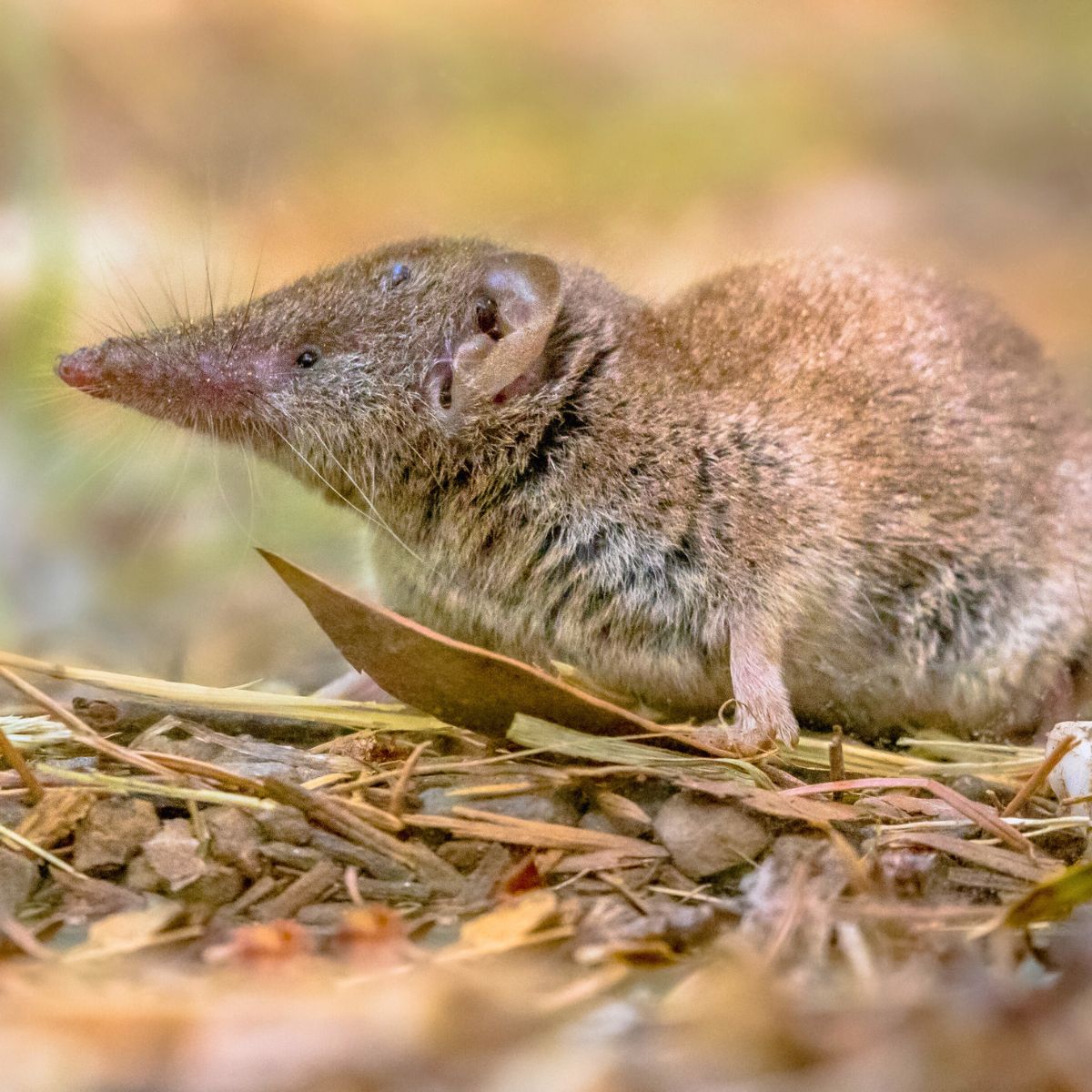It has the body of a mouse, the snout of an anteater, and the poor vision of a mole, and it’s creating tunnels and holes in your lawn. I’m talking, of course, about the shrew. This tiny mammal doesn’t actually cause nearly as much damage as the rodents it resembles (and eats!), but if you’d prefer it didn’t dig up little sections of your lawn or eat your birdseed, you might want to know how to get rid of shrews in the yard.

First, let’s make sure you’ve properly identified your pest.
What is a shrew?
Though they resemble mice, shrews are actually not rodents. They average three to four inches long with gray-brown fur, small black eyes, a long snout, sharp teeth, and a hairless tail at least as long as their body.
Shrews often prefer habitats that provide plenty of ground cover, such as gardens, abandoned burrows, tree cavities, and human-made structures. Although they tend to keep to themselves, mating occurs at almost all times of the year.
Shrews are primarily insectivorous but sometimes eat nuts, seeds, other plant matter, and even small mammals. Some species of shrew have venom in their teeth, used as a form of defense and a method for killing mice for food. Three species have the unique ability to use echolocation to get a sense of their surroundings.
How to identify shrew damage
Shrews don’t intentionally eat away at roots and bulbs; the holes and tunnels they dig are minimal. But they can eat as much as triple their body weight in insects, slugs, and mice in a single day, so they might not be such bad creatures to have around. Rather than being pests themselves, they can serve as pest control!
If you do suspect you have an especially pesky shrew hanging around, though, look for the following signs:
- pilfered birdseed or garden seeds
- little tunnels in the grass, often ending in a burrow entrance hole
- small, dark, corkscrew-shaped droppings
- pungent odor
- tiny, barely visible tracks with five toes on each foot, front and back feet often overlapping, and possibly a tail mark down the middle
How to Get Rid of Shrews in the Yard
If you have confirmed that you do, in fact, have a mischievous shrew in your yard, try some or all of the following methods for getting rid of it. Remember that, like all animals, shrews need food, water, and shelter, so your best bet is to reduce these three necessities in your yard. And if all else fails, you can (probably) use a shrew trap.
1. Remove food sources
Shrews won’t usually choose birdseed or pet food as a primary food source, but they will go after it if their preferred options are limited. Regularly clean up around bird feeders, and keep pet bowls inside if possible.
Otherwise, ensure all uneaten pet food is picked up after feeding. Keep on top of insect pest control since insects are the main part of a shrew’s diet.
2. Prevent water access
In addition to providing hydration for the shrews, water attracts the insects they feed on. Avoid over-watering your lawn and garden; otherwise, try to prevent puddles from forming on your property as much as possible. After a good rain, dump any containers holding standing water.
3. Reduce cover
Clear away dead leaves, fallen branches, weeds, and other plant debris, providing an inviting habitat for shrews. Similarly, trim any overgrown shrubs and prune low-hanging tree branches. Because shrews also love tall grass, make sure to mow regularly too. Many of these things also provide habitat for insect pests, so this step can help with more than one problem!
4. Use a live trap
Of course, you can also trap the problem shrew. Shrews are protected by law in some areas, so first check with your local wildlife control office or humane society to see if trapping shrews is an option for you.
Once you have the go-ahead, purchase or borrow a rodent-sized live trap, such as the Havahart X-Small 2-door trap or this humane live catch trap. Place it at the entrance to a burrow and bait it with hot dog slices, some bacon, or a dab of peanut butter. Check the trap first thing in the morning and one or two more times during the day. When you find a shrew in the trap, release it as soon as possible in a wooded area away from home.
Shrews do not typically cause significant damage in lawns and gardens, so chances are, you can cohabitate peacefully. In fact, shrews offer pest control services to you by feeding on insects, mice, and slugs. But if you find their tunnels unsightly or have an especially troublesome shrew, the above methods should help you eliminate the problematic little mammal.
Other Pests
You might have moles or voles if you have tunnels in your yard and don’t see signs of shrews. Here’s how to take care of those:




How To Get Rid Of Voles In The Garden
Thursday 6th of July 2023
[…] No voles? Maybe you have shrews. Here’s how to get rid of shrews. […]